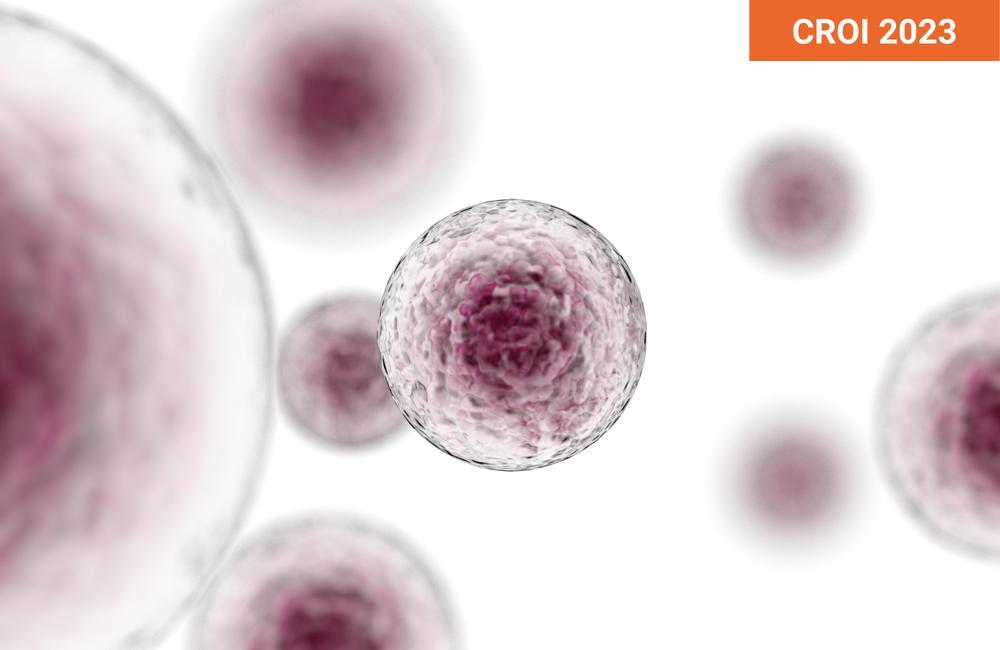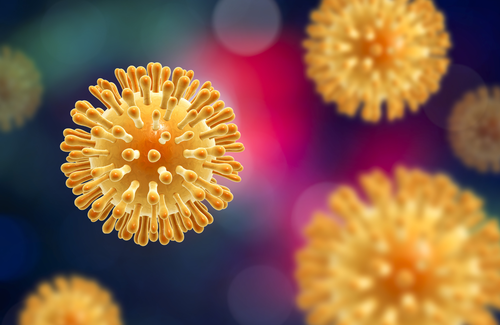
A man in Düsseldorf, Germany who received a stem cell transplant using HIV-resistant donor cells nearly a decade ago and stopped antiretroviral therapy more than four years ago has no detectable HIV and has finally been declared cured, according to a report today in Nature Medicine, coinciding with the annual Conference on Retroviruses and Opportunistic Infections (CROI).
The 'Düsseldorf patient' appears to be one of five people who have eliminated HIV after the procedure, but his doctors have been more hesitant to say he is cured, and he has not received extensive media coverage like the other cases. The man, named Marc, was interviewed by the Dutch newspaper NRC in 2021, but he has received little attention in the English-language press.
The man, now 53, was diagnosed with acute myeloid leukaemia, a life-threatening blood cancer, in 2011, just months after he started antiretroviral therapy. In February 2013, he received a stem cell transplant from an unrelated donor with two copies of a rare genetic mutation known as CCR5-delta32, which deletes the receptors most strains of HIV use to enter CD4 cells. In effect, the donor cells give the recipient a new HIV-resistant immune system.
“From the outset, the aim was to treat both the leukaemia and the HIV,” Professor Guido Kobbe of Düsseldorf University Hospital, who performed the transplant, said in a press release.
To prepare for the transplant, the man received reduced intensity conditioning chemotherapy to make room for the new cells. Afterwards, he experienced mild but persistent graft-versus-host disease, where the donor cells attack the recipient’s body.
After more than five years with undetectable HIV, the man and his medical team decided to try a closely monitored antiretroviral treatment interruption in November 2018. Since that time, they have tested his blood using ultrasensitive assays and examined his peripheral immune cells and gut and lymph node tissue. Although they did see “sporadic traces” of HIV DNA in peripheral T cells, they found no evidence of replication-competent HIV. The man has low-level immune activation and waning HIV-specific antibody and T cell responses, indicating a lack of ongoing production of viral antigens. Now, after more than four years of extensive testing, his doctors are ready to say he is cured.
“Following our intensive research, we can now confirm that it is fundamentally possible to prevent the replication of HIV on a sustainable basis by combining two key methods,” said lead study author Dr Björn Jensen. “On the one hand, we have the extensive depletion of the virus reservoir in long-lived immune cells, and on the other hand, the transfer of HIV resistance from the donor immune system to the recipient, ensuring that the virus has no chance to spread again.”
A handful of stem cell cures
Only a few people with HIV have been cured after a stem cell transplant. The first, Timothy Ray Brown, known as the 'Berlin patient', received two transplants to treat leukaemia in 2006. His oncologist, Dr Gero Hütter, came up with the idea of using stem cells with a double CCR5-delta32 mutation, speculating that it might cure both the cancer and HIV.
As described in a poster at CROI 2008, Brown first underwent intensive conditioning chemotherapy and radiation to prepare for the transplant. After the transplant, he developed near-fatal graft-versus-host disease. He stopped his antiretrovirals at the time of his first transplant, at age 40, but his viral load did not rebound. Researchers extensively tested his blood, gut and other tissues, finding no traces of replication-competent HIV. At the time of his death in September 2020, Brown had been free of HIV for more than 13 years.
A second man, Adam Castillejo, dubbed the 'London patient', was cured after receiving a stem cell transplant to treat Hodgkin lymphoma. As researchers first reported at CROI 2019, he received cells from a donor with the double CCR5-delta-32 mutation in 2016 and stopped antiretroviral therapy about a year and a half later. After more than five years, he remains free of HIV.
At CROI 2022, researchers presented the 'New York patient', a middle-aged woman diagnosed with leukaemia in 2017 who received a transplant using a combination of umbilical cord blood cells with the CCR5-delta32 mutation and partially matched adult stem cells from a relative. She stopped antiretrovirals three years after the transplant, and at last report she was still free of HIV.
Finally, at last summer’s International AIDS Conference, researchers described the 'City of Hope patient', named after the California cancer centre where he was treated. This man is older, has been living with HIV longer and had more extensive immune suppression than the other people cured with stem cell transplants. In 2019, at age 63, he received a transplant from a donor with the same double mutation. He stopped antiretroviral therapy about two years later and remains free of HIV.
Questions remain unanswered
Researchers are still working to learn why these cures after stem cell transplantation were successful while other attempts have failed. Using stem cells with a double CCR5-delta32 mutation seems to be key. At CROI 2012, researchers described two HIV-positive men in Boston who received stem cell transplants for cancer treatment from donors without the mutation. Both initially looked like they might be cured, but they eventually experienced delayed viral rebound after stopping antiretrovirals. Several other people who received transplants from donors with the mutation died due to infections or cancer progression.
A poster at this year’s CROI describes what is thought to be the first known case of viral rebound in a person who received a stem cell transplant from a donor with a double CCR5-delta32 mutation. In this case, a 67-year-old individual who had no detectable HIV 15 months after the transplant tried a treatment interruption, but HIV came back eight weeks later. These findings indicate that HIV that uses CCR5 receptors “can persists and perpetually spread” even more than a year after a clinically successful double CCR5-delta32 stem cell transplant, Paul Rubinstein, MD, of the University of Illinois at Chicago, and colleagues concluded.
Some experts have suggested that the strength of pre-transplant conditioning chemotherapy or the intensity of the graft-versus-host reaction might play a role in eliminating HIV, but the five patients who have been cured received different conditioning regimens and some experienced mild or no graft-versus-host disease.
Even if researchers manage to answer the outstanding questions, stem cell transplants are far too risky for people who do not need them to treat life-threatening cancer. What’s more, the procedure is medically intensive and costly and would be impossible to scale up to treat the millions of people living with HIV worldwide.
The Düsseldorf patient now aims to support fundraising for research so there can also be an HIV cure without a bone marrow transplant. “In my case, it was necessary because of the leukaemia, but it really is a very rocky road,” he said.
These cases offer clues that could help researchers develop a more widely applicable approach to achieve a functional cure, or long-term remission without antiretroviral therapy. For example, gene editing technologies such as zinc finger nucleases or CRISPR could be used to delete or disable CCR5 receptors and make an individual’s own immune cells resistant to HIV entry.
“Expansion of this approach to introduce the CCR5-delta32 mutation into wild-type stem cell grafts using gene therapy in combination with new reservoir reduction strategies may hold the promise of an HIV-1 cure outside of life-threatening haematological malignancies,” the study authors wrote.
Jensen B et al. In-depth virological and immunological characterization of HIV-1 cure after CCR5Δ32/Δ32 allogeneic hematopoietic stem cell transplantation. Nature Medicine, 2023.
https://doi.org/10.1038/s41591-023-02213-x
Rubinstein P et al. HIV-1 viral reservoir reactivation after CCR5 delta 32/32 stem cell transplantation. 30th Conference on Retroviruses and Opportunistic Infections, Seattle, abstract 434, 2023.
View the abstract on the conference website.
Update: This article was amended on 21 February 2023 to add more details of the poster presented at CROI.

